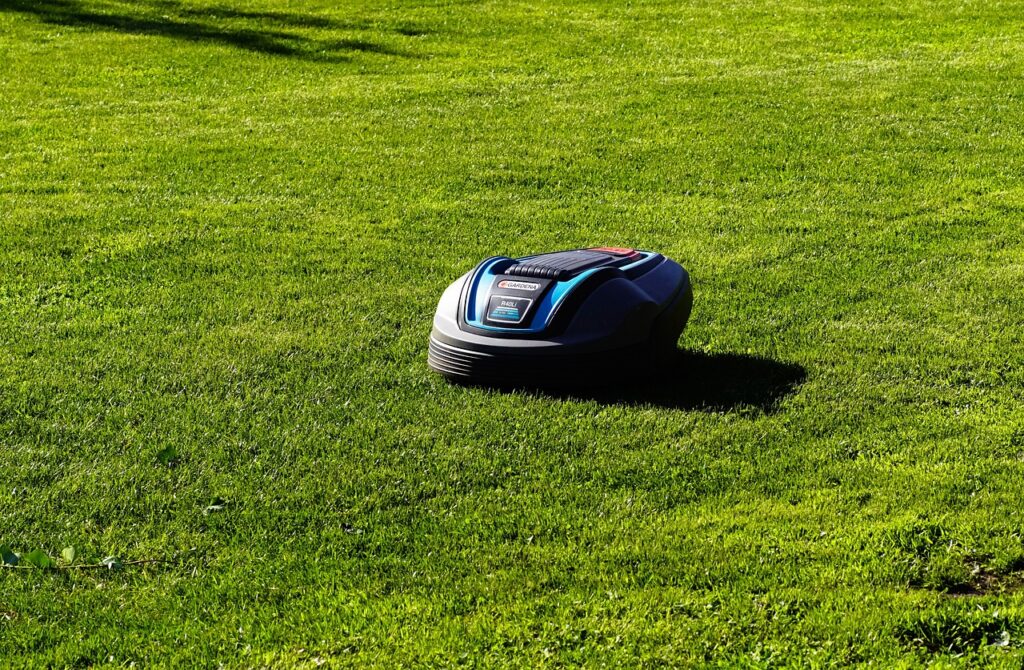As solar energy and modern agriculture expand globally, managing weeds in challenging terrains—like hillsides, wetlands, and between tightly spaced solar panels—has become a real obstacle. Traditional weed control methods are no longer enough: manual labor is slow and risky, and standard wheeled mowers often can’t handle steep slopes or uneven ground.
That’s where all-terrain robotic mowers come in. These machines, equipped with track-based mobility, smart navigation, and slope-adaptive cutting systems, are changing the game for industries like solar farm maintenance, orchards, ranchlands, and roadside vegetation management.
Key Challenges in Difficult Terrain – And How Robotic Mowers Solve Them
Problem 1: Traditional Equipment Can’t Keep Up
-
Poor terrain adaptability: Wheeled mowers tip over on slopes >25°, get stuck in wetlands, and can’t fit through tight panel rows (<50cm).
-
Low cutting precision: Manual weeding often leaves 15-20% uncut. Standard machines can’t control cutting height, risking plant damage.
-
High safety risks: Workers face fall hazards on slopes. Machines can accidentally hit cables or pipes—causing 30% of O&M accidents.
Solution: Next-Gen Robotics Break Through the Limits
-
Track drive systems with tank-like mobility handle 40° slopes and climb over 15cm obstacles—3x better terrain clearance than wheeled machines.
-
Smart navigation using GPS + UWB + LiDAR enables real-time 3D mapping and <5cm path accuracy.
-
Floating cutting decks with alloy blades slice tough weeds with 98% efficiency.
Top 4 Advantages of All-Terrain Robotic Mowers
1. Total Terrain Adaptability
-
Solar farms: Slim body design + anti-collision sensors = 99.7% coverage between panels.
-
Tea plantations: Terrain-following blades protect delicate shoots, boosting efficiency 10x.
-
Wetlands: Waterproof (IP67) + deep-tooth tracks = 60 acres/day weeding.
2. From Remote Control to Full Autonomy
-
Manual control: 500m remote range + app monitoring with 30-second response.
-
Autonomous mode: AI-driven Z-pattern mowing reduces missed areas to <1%.
-
Cloud sync: Log data, predict weeding cycles, and cut annual costs by 40%.
3. Safety First, No Matter the Conditions
-
Machine safety: Auto shut-off on tilt, overload protection—70% fewer accidents.
-
Environmental endurance: Works in -30°C to 50°C, up to 3,000 continuous hours.
-
Eco-friendly cutting: Water mist reduces pesticide use by 90%, meeting EU standards.
4. High Efficiency Meets Low Cost
-
Coverage: Up to 120 acres/day. Solar generation efficiency rises 3–5%.
-
Cost: Annual maintenance under $3,000, ROI within 2 years.
-
Labor savings: One person can manage 3–5 robots.
Ideal Use Cases & How to Choose the Right Model
Key Applications and Specs
| Scenario | Core Needs | Recommended Specs | Case Study |
|---|---|---|---|
| Solar Farms | Obstacle avoidance, narrow gaps | Width < 80cm, ±2cm obstacle precision | CGN, Qinghai: +4.5% energy output, 99.2% cleared |
| Mountain Orchards | Slope handling, blade control | Slope ≥ 35°, blade angle ±15° | Shaanxi Apple Farm: 95% shoot retention, 8x faster |
| Wetlands/Ranches | Waterproofing, anti-sink design | Pressure ≤ 18kPa, IP67 rating | Inner Mongolia Ranch: 70 acres/day, <5% downtime |
5 Must-Have Buying Criteria
-
Terrain Fit: Prioritize track-based systems for hills, thick grass, and wet areas.
-
Smart Features: Remote control as standard; upgrade to AI + cloud if needed.
-
Protection Rating: IP65+ for outdoor; IP67+ for water-prone areas.
-
Battery Life: 4+ hours for electric; hybrid options for large-scale use.
-
Support & Service: Look for brands offering customization and remote diagnostics.
Market Outlook: A Booming Future for Smart Weeding
With global solar installations expected to exceed 2 TW by 2025, demand for robotic mowers in complex environments is growing fast—over 30% CAGR.
Tech trends include:
-
Multifunction integration: Weeding, inspections, and data collection in one.
-
Green power: Solar-charging and full electric models reaching 60% of the market.
-
Cloud-based coordination: Digital twins and multi-robot scheduling boost efficiency 40%.
Final Thoughts: Leading the Smart Maintenance Revolution
All-terrain robotic mowers are more than just tools—they’re part of a smarter, safer, and more efficient way to manage vegetation. Choosing a model with terrain adaptability, intelligent automation, and strong after-sales support will set your operation ahead in the global race for agricultural and solar efficiency.


